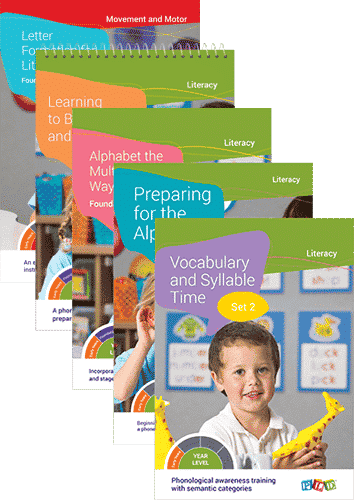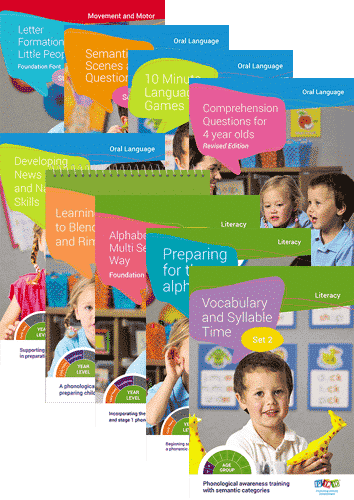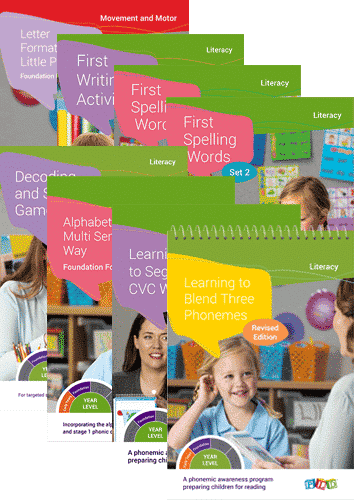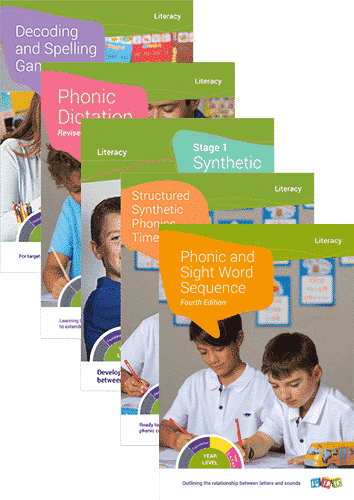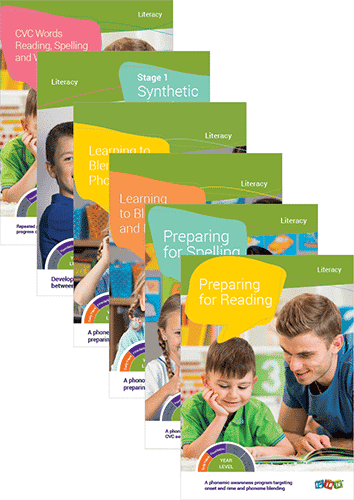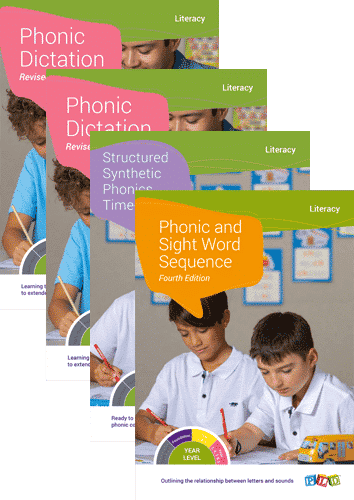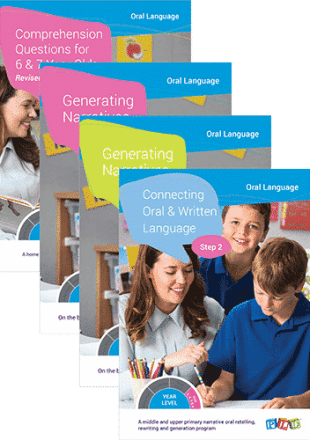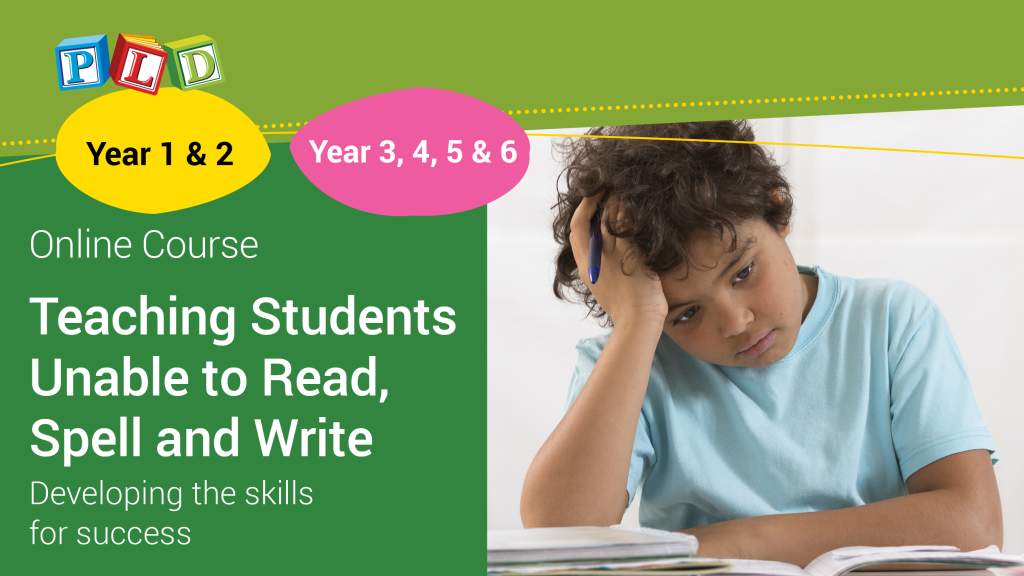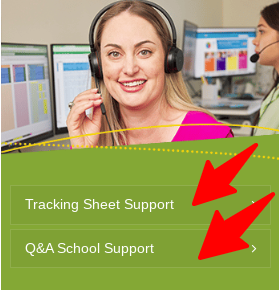Implementing SSP in Education Support Using PLD
Proficient literacy skills are vital in society today. These skills hold particular significance for students with special educational needs, influencing their social engagement, employment prospects, overall wellbeing, and self-esteem. To optimise literacy achievements, Structured Synthetic Phonics (SSP) programs and interventions are advised for both mainstream and special education settings. For students with special needs, it’s often necessary to implement adjustments, to the SSP program materials, to cater for the varying needs of these students.
Use the tabs below to navigate:
Every student with special educational needs is unique. However, for those who exhibit reading, spelling, and writing abilities below their current primary school level, PLD’s SSP program can be applied effectively.
PLD recommends that teaching and support staff focus on the online courses that are most relevant to the developmental levels of their students, rather than completing the entire suite, and the courses can be revisited for period of 30 days.
Foundation Classes
- Foundation classes are generally recommended to concentrate on the Early Years Implementation of SSP. You can click here to explore the Early Years Literacy Starter Packs and Literacy and Oral Language Starter Packs.
- Staff working with Foundation classes are typically advised to concentrate on the Early Years phase of SSP implementation. The relevant course for this stage is ‘Implementing SSP in the Early Years’.

Year 1 & 2 Classes
- For Year 1 and 2 classes, it is generally recommended to begin with a Foundation level implementation of SSP. You can find the Foundation Literacy Starter Packs and Literacy and Oral Language Starter Packs by clicking here.
- Additionally, it is common at this level to have a significant portion of students operating at a pre-literacy level. The Foundation programs address both pre-literacy and early literacy stages.
- Staff working with Year 1 and 2 classes are typically advised to concentrate on a Foundation level implementation of SSP. The relevant course for this stage is ‘Implementing SSP in Foundation’

Year 3 & 4 Classes
- For Year 3 and 4 classes, it is generally recommended to begin with the Year 1 Level Implementation of SSP. You can find the Year 1 Literacy Starter Pack and Literacy & Oral Language Pack by clicking here.
- Additionally, it is common for these year levels to have a significant portion of students operating at a pre-literacy level. Click here for the Intensive Pre-Literacy Teaching Pack.
- Staff working with Year 3 and 4 classes are typically advised to concentrate on a Year 1 & 2 implementation of SSP. The relevant course for this stage is ‘Implementing SSP in Year 1 & 2’.
- However, it is also expected that there will be a portion of students who are at a pre-literacy level. For those working with these students, the appropriate course is: ‘Teaching Students Who Are Unable to Read, Spell & Write‘.


Year 5 & 6 and Secondary Schools
- For Years 4, 5, 6, and Secondary Schools, to provide an accurate quote, it will be necessary to either estimate the functional literacy levels within the classes or administer the placement test outlined below.
- Additionally, Years 3 – 6, and secondary classes may require programs for students who are not yet at the reading, spelling, and writing stages (i.e Pre-Stage 1). It is typical for these year levels to also have a portion of students operating at a pre-literacy level. You can find the Intensive Pre-Literacy Teaching Pack here.
- Staff in Years 5 and 6 are generally advised to engage with the course that aligns with the levels within their classes. ‘Implementing SSP in Year 3, 4, 5 & 6’ provides a comprehensive overview of PLD’s Stages 1 – 6, whilst ‘Implementing SSP in Year 1 & 2’ primarily focuses on PLD’s stages 1, 2, and 3.
- However, it is also expected that there will be a portion of students who are at a pre-literacy level. For those working with these students, the relevant course is ‘Teaching Students Who Are Unable to Read, Spell & Write’.

For schools new to PLD, by filling out the form below, you can request cost estimates for training and essential programs. Subsequently, a quote will be sent to the provided email address (typically within 48 hours.) Following this, a complimentary 30-minute consultation will be scheduled to further discuss and tailor the quote to meet the specific requirements of the school.


Foundation Classes
For Foundation classes, initiating PLD implementation in the Early Years is recommended. Find the Early Years Manuals here.
- For classes starting implementation in Semester 1, it is advisable to begin teaching the outlined skills, starting with the Term 1 Early Years implementation.
- If commencing implementation in Semester 2, consider administering an Early Years Placement Test to determine starting points for various targeting teaching groups. Further information on this is available here.
Year 1 and 2 Classes
Year 1 and 2 classes are recommended to initiate PLD implementation at the Foundation level. Find the Foundation Manuals here.
- For classes starting implementation in Semester 1, it is advisable to begin teaching the outlined skills, starting with the Term 1 Foundation implementation.
- If commencing implementation in Semester 2, consider administering a Foundation Placement Test to determine starting points for various targeting teaching groups. Further information on this is available here.
Year 3, 4, 5, 6 and Secondary Classes
For students working in Years 3 to 6, and in Secondary classes, the Placement Tests outlined in the Year 3, 4, 5 and 6 Screening & Tracking Manual aid in establishing stages and goals..
- Spelling Placement Tests, which cover PLD’s Stages 1 – 6, are located on pages 9 – 16.
- In addition, the Reading Placement Test, which covers PLD’s Stages 1 – 6, will identify the students who still require decodable reading material. These are located on pages 23 – 26.
- Additional sub-tests are available for students operating at a pre-literacy (or pre-CVC) level. These subtests are located in the red box on pages 27 – 29.

- Register for PLD Tracking Sheets here to streamline the tracking process.
- Following the instructions set up tabs for each class. It is essential that teaching staff enter their own test scores, as outlined in the relevant PLD tracking sheet videos.
- For complex students, individual tracking sheets are also provided.
- Based on Placement Test results, PLD recommends that each class is organised into three (3) targeted teaching groups and specific learning objectives are set for the term.
- Share the Tracking Sheets with the PLD office for personalised support.
References:
- Afacan, K., Wilkerson, K.L., & Ruppar, A.L. (2017). Multicomponent Reading Interventions for Students With Intellectual Disability, Remedial and Special Education, 39 (4), 229 – 242 39 (4), 229 – 242.
- Dessemontet, R.S., Martinet, C., de Chambrier, A., Martini-Willemin, B., and Audrin, C. (2019). A meta-analysis on the effectiveness of phonics instruction for teaching decoding skills to students with intellectual disability, Educational Research Review, 26, 52-70, ISSN 1747-938X, https://doi.org/10.1016/j.edurev.2019.01.001.
- Hempenstall, K. (2008). Corrective Reading: An Evidence‐Based Remedial Reading Intervention. Australasian Journal of Special Education, 32(1), 23-54.
- Stylianakis, C., & Little, C. (2013). Implementing a multilevel literacy program for a child with autism. Special Education Perspectives, 22(1), 7-14.



